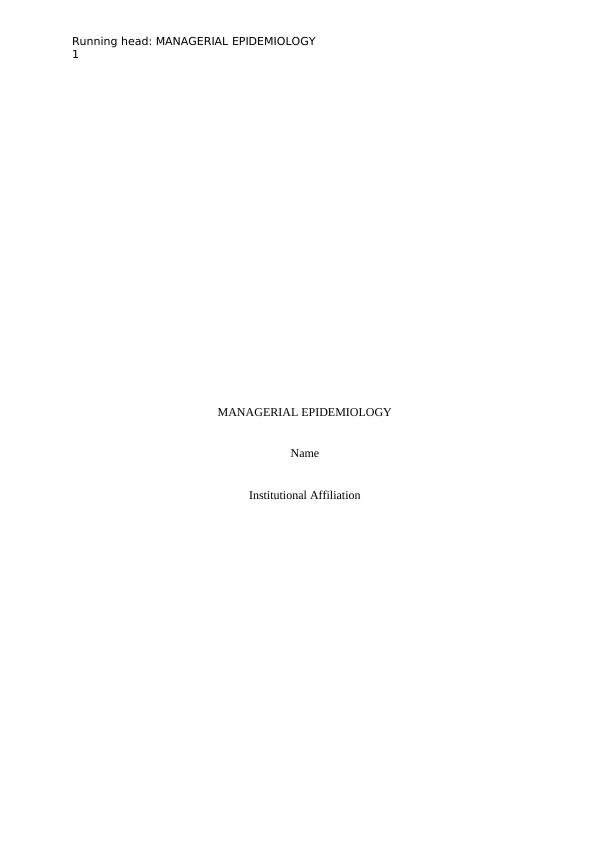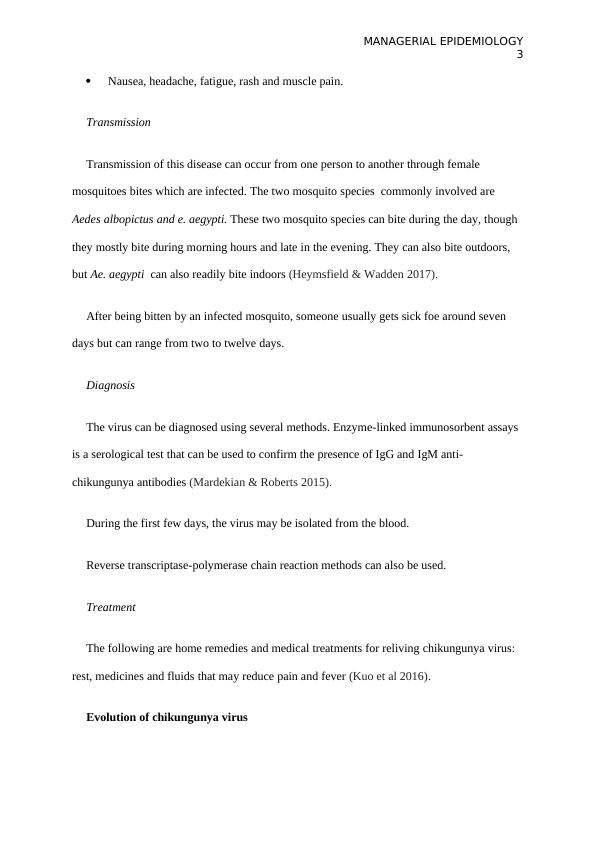Managerial Epidemiology
8 Pages1760 Words296 Views
Added on 2022-12-14
About This Document
This study provides an in-depth analysis of the chikungunya virus, including its origins, transmission, diagnosis, treatment, and epidemiology. It explores the impact of the virus on the economy and emphasizes the importance of controlling the mosquitoes responsible for its transmission.
Managerial Epidemiology
Added on 2022-12-14
ShareRelated Documents
End of preview
Want to access all the pages? Upload your documents or become a member.
Genetically modifying insects to inhibit disease transmission
|7
|1497
|492
Chikungunya and Dengue Fever Assignment PDF
|7
|1578
|130
Epidemiology of Zika Virus Disease and its Social and Economic Drivers
|10
|3920
|132
Essay. The threat of communicable disease. Introduction
|12
|4321
|1
Diseases Ddrugs And Complications
|13
|3883
|23
DISEASE EPIDEMIOLOGY: DISEASE OUTBREAK MODELLING.
|12
|3426
|13



